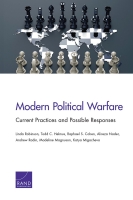by Antonia Ward
 With the collapse of ISIS and loss of the majority of its territory in Syria and Iraq by the end of 2017, the world was relieved at the news of the “end” of the terrorist-cum-insurgent group. This response paralleled a different, but not altogether dissimilar, celebration following the death of Osama Bin Laden in 2011. By 2012, many stated that al-Qaeda's power and influence had declined due to the loss of its charismatic and skilled leader. However, as the case of al-Qaeda shows, while terrorist groups may suffer periods of decline they are extremely resilient and adaptable. It is dangerous for the West to underestimate them; most terrorist groups experience resurgence.
With the collapse of ISIS and loss of the majority of its territory in Syria and Iraq by the end of 2017, the world was relieved at the news of the “end” of the terrorist-cum-insurgent group. This response paralleled a different, but not altogether dissimilar, celebration following the death of Osama Bin Laden in 2011. By 2012, many stated that al-Qaeda's power and influence had declined due to the loss of its charismatic and skilled leader. However, as the case of al-Qaeda shows, while terrorist groups may suffer periods of decline they are extremely resilient and adaptable. It is dangerous for the West to underestimate them; most terrorist groups experience resurgence.









